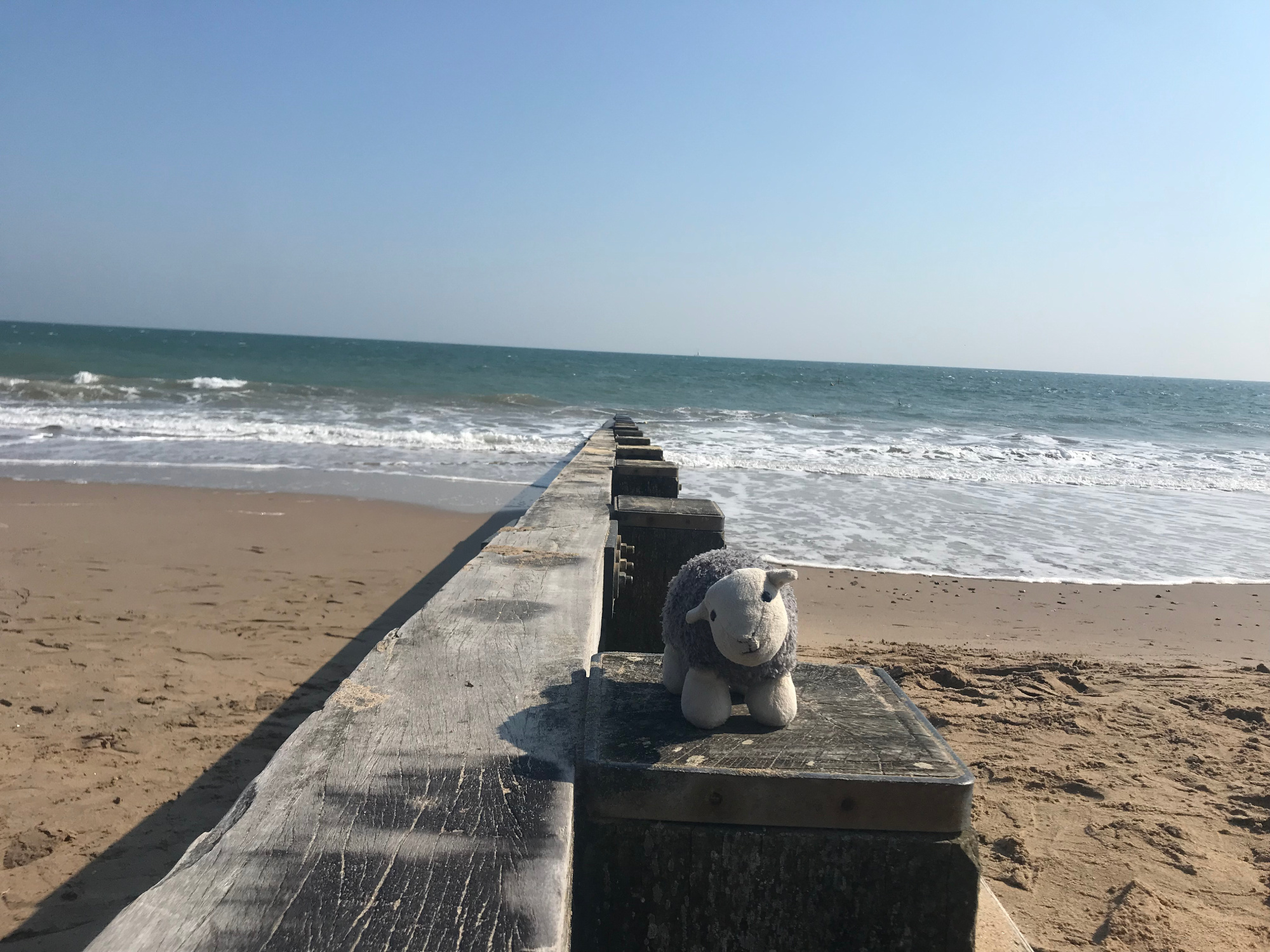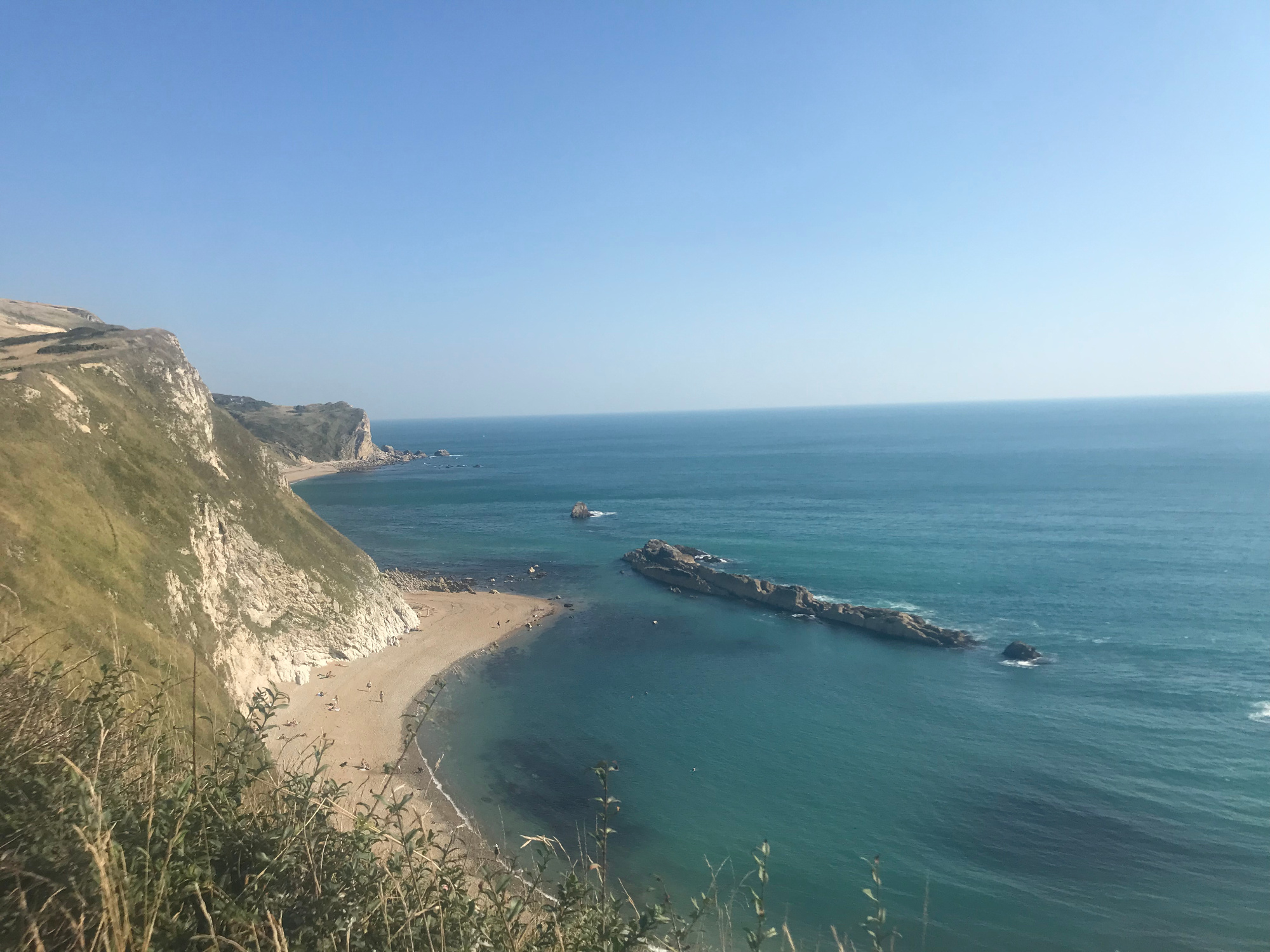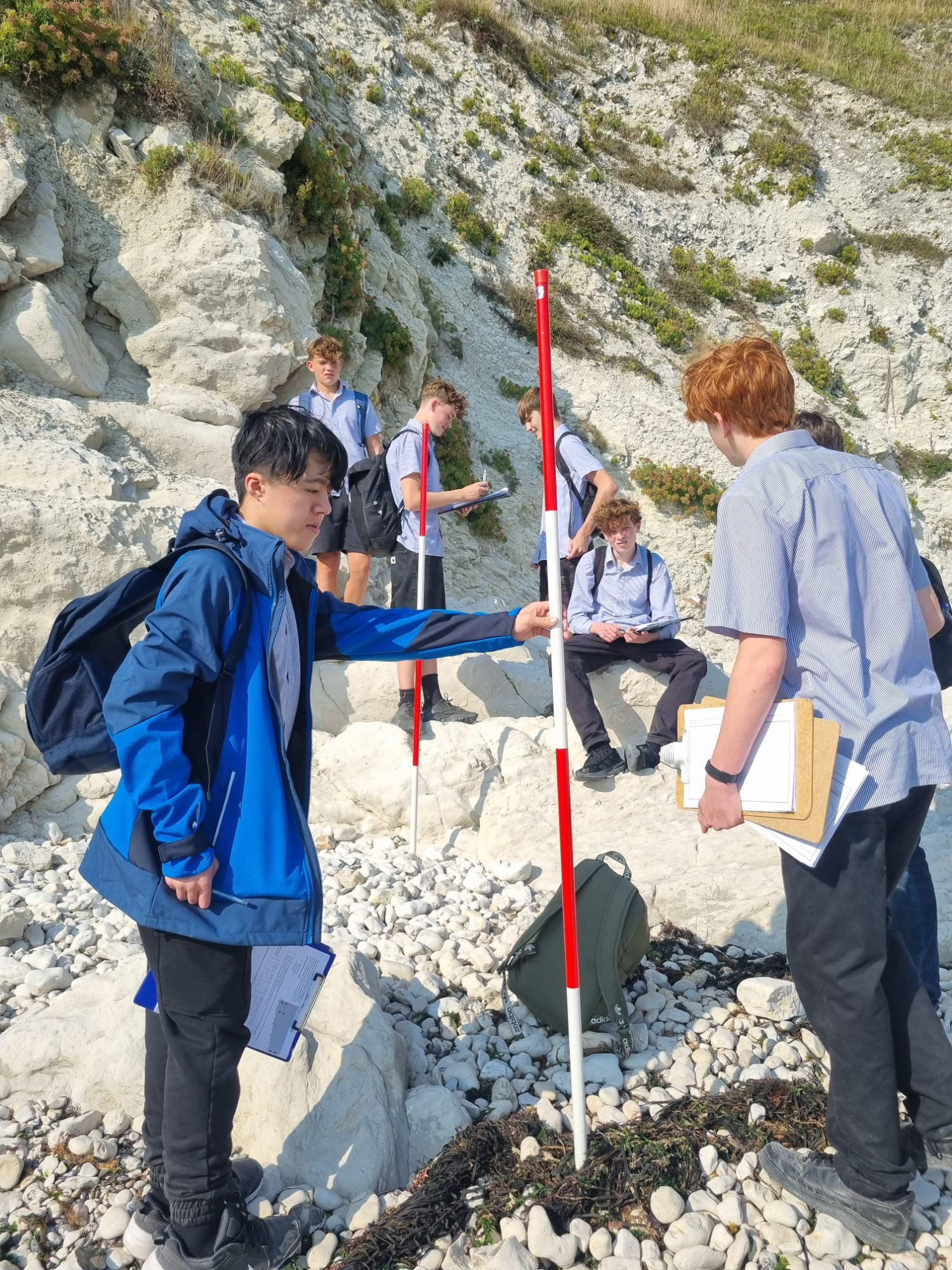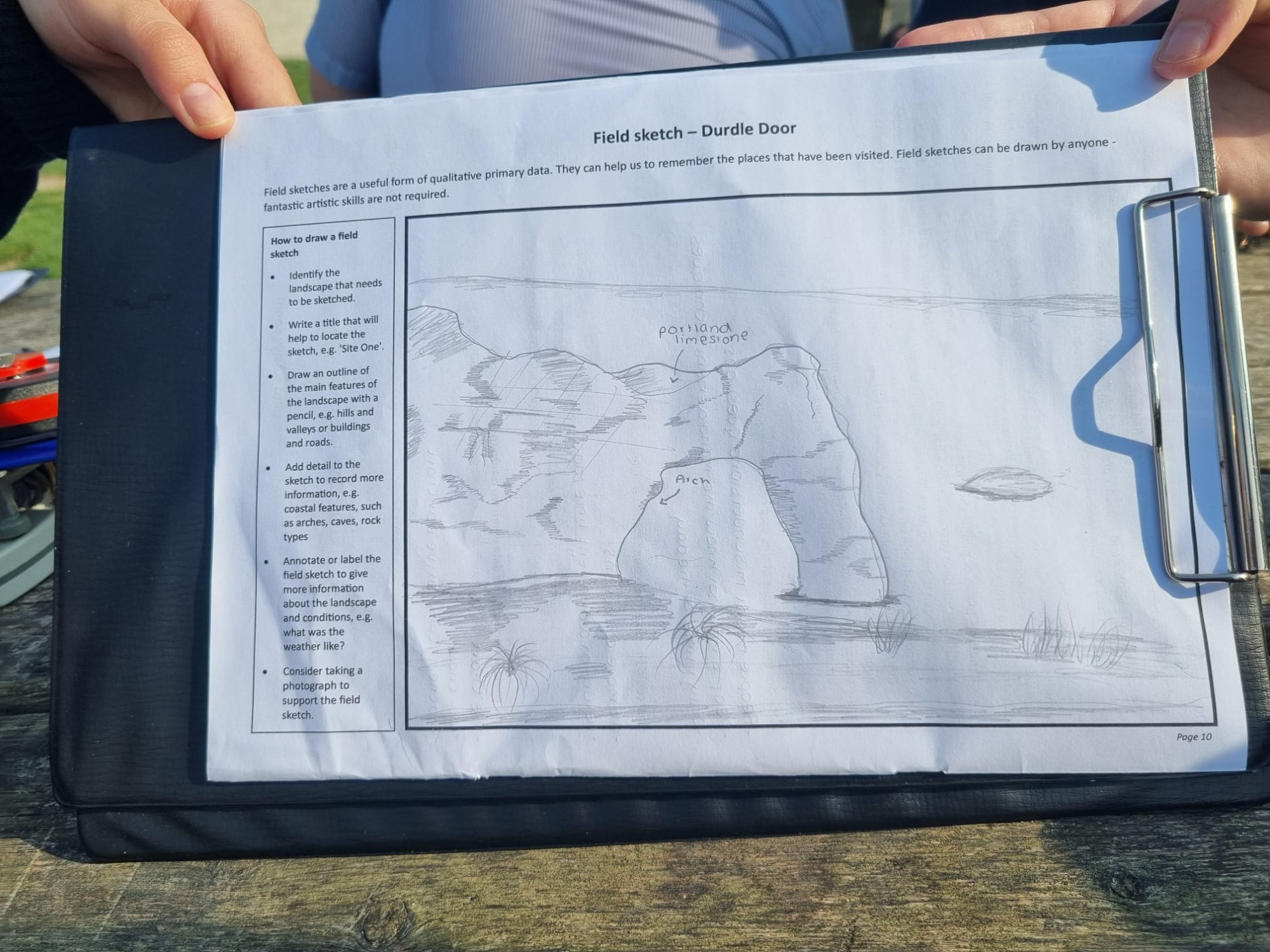Geography Field trip
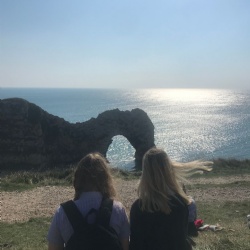
Year 11 GCSE Geography field trip to Dorset
On Thursday 19 and Friday 20 September 2024, our Geography Department took two groups of Year 11 GCSE Geographers to the Jurassic Coast in Dorset. Both days were warm, dry and sunny – perfect for a day at the beach.
The aim of the trip was to collect primary data and evaluate the effectiveness of coastal management in three locations along the Jurassic Coast. In lessons, pupils have learnt the theory of coastal processes and management. The trip provided an excellent opportunity to see these in action outside the classroom. Pupils will be asked about their fieldwork experiences in their Physical Geography exam next summer.
In the morning, pupils visited Swanage Bay. Here layers of hard and soft rocks are laid out at an angle to the sea, known as a discordant coastline. This has created distinct headlands and sheltered bays. Swanage has invested in many coastal management strategies and our pupils were asked to consider the effectiveness of these. By completing questionnaires, evaluation surveys and measuring the sediment heights along the beach, pupils collected a wide range of evidence to support their evaluations. We also discussed each method and why it was appropriate for collecting information about coastal processes as well as any limitations.
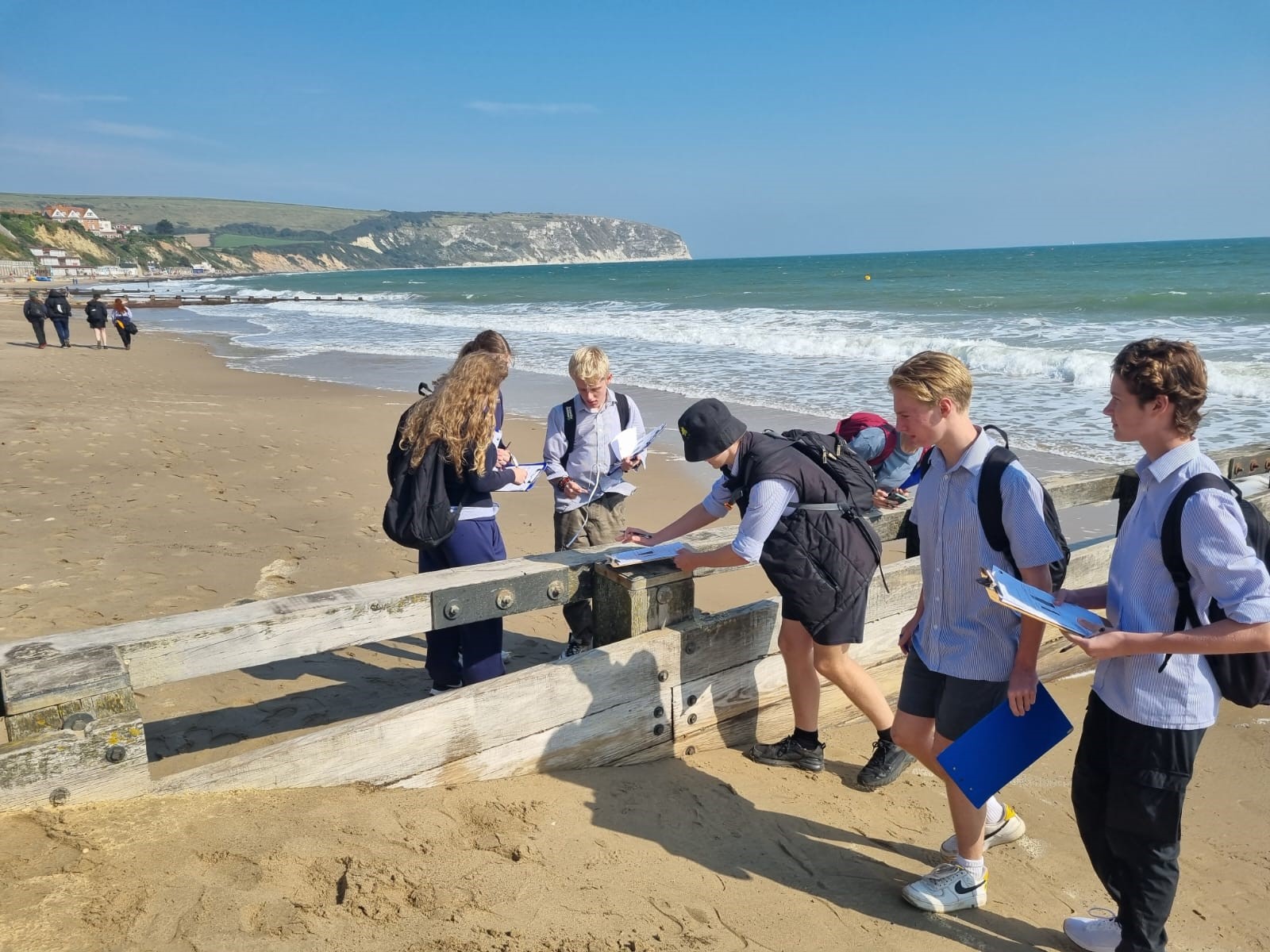
After a lunch break with beautiful views, we made our way along the coastline to Durdle Door and Lulworth Cove. As we descended the hill towards the viewpoint at Durdle Door, many stopped to photograph the beautiful natural landscapes on this stretch of coastline. Pupils completed a field sketch and were encouraged to reflect on their prior learning to annotate the key features and processes in this case study location.
All pupils persevered and made it back up the steep hill to the cliff top and after a quick rest, we made our way to Lulworth Cove. Here layers of rocks are parallel to the sea on a concordant coastline. The distinct shape of the cove is created due to softer rocks and clays eroding faster behind the layer of hard limestone. Pupils completed another field sketch, measured the beach gradient and sampled the shape and size of sediment. This gave them further experience in different methods of data collection and allowed them to suggest how wave action is shaping the area.
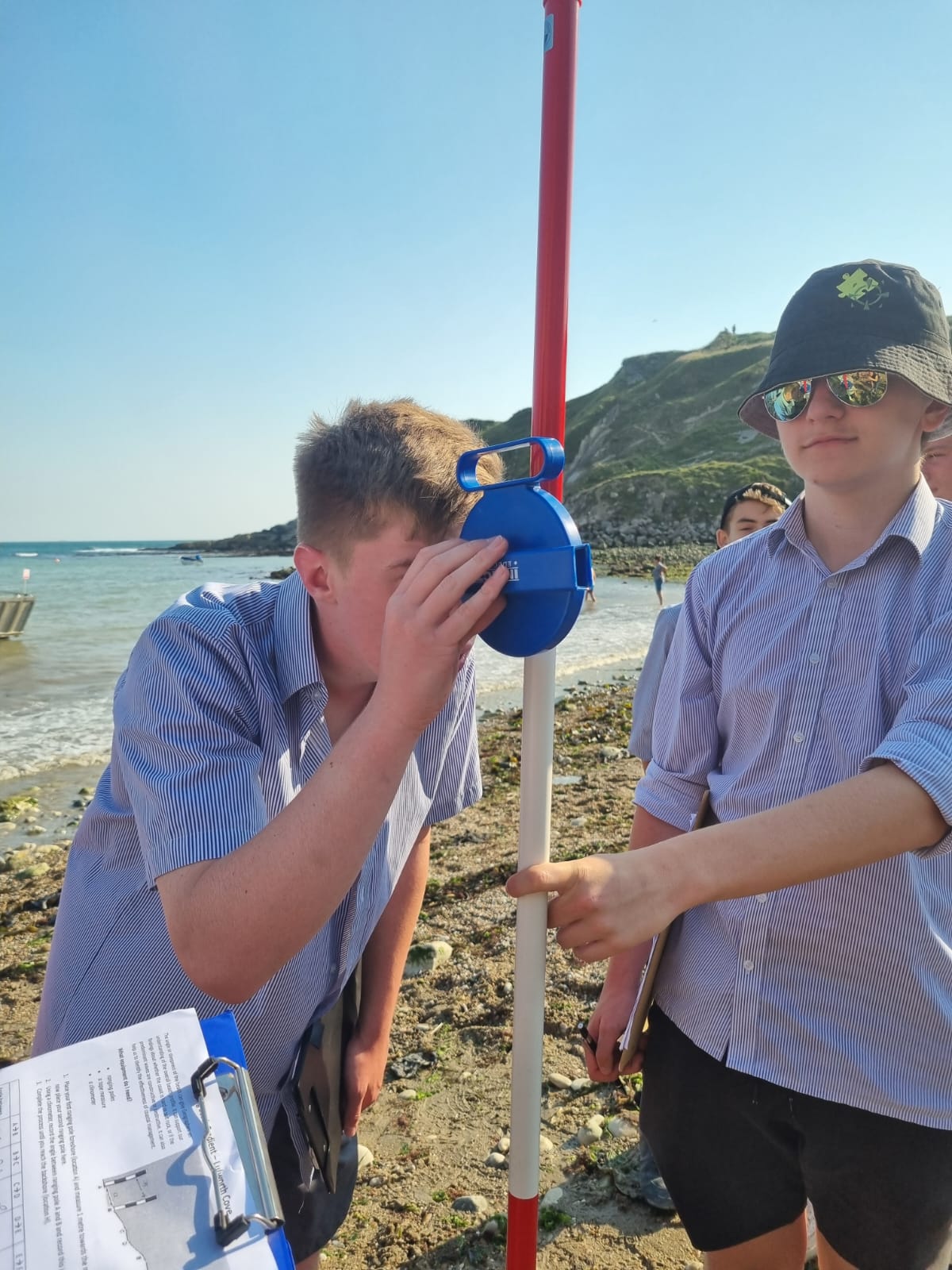
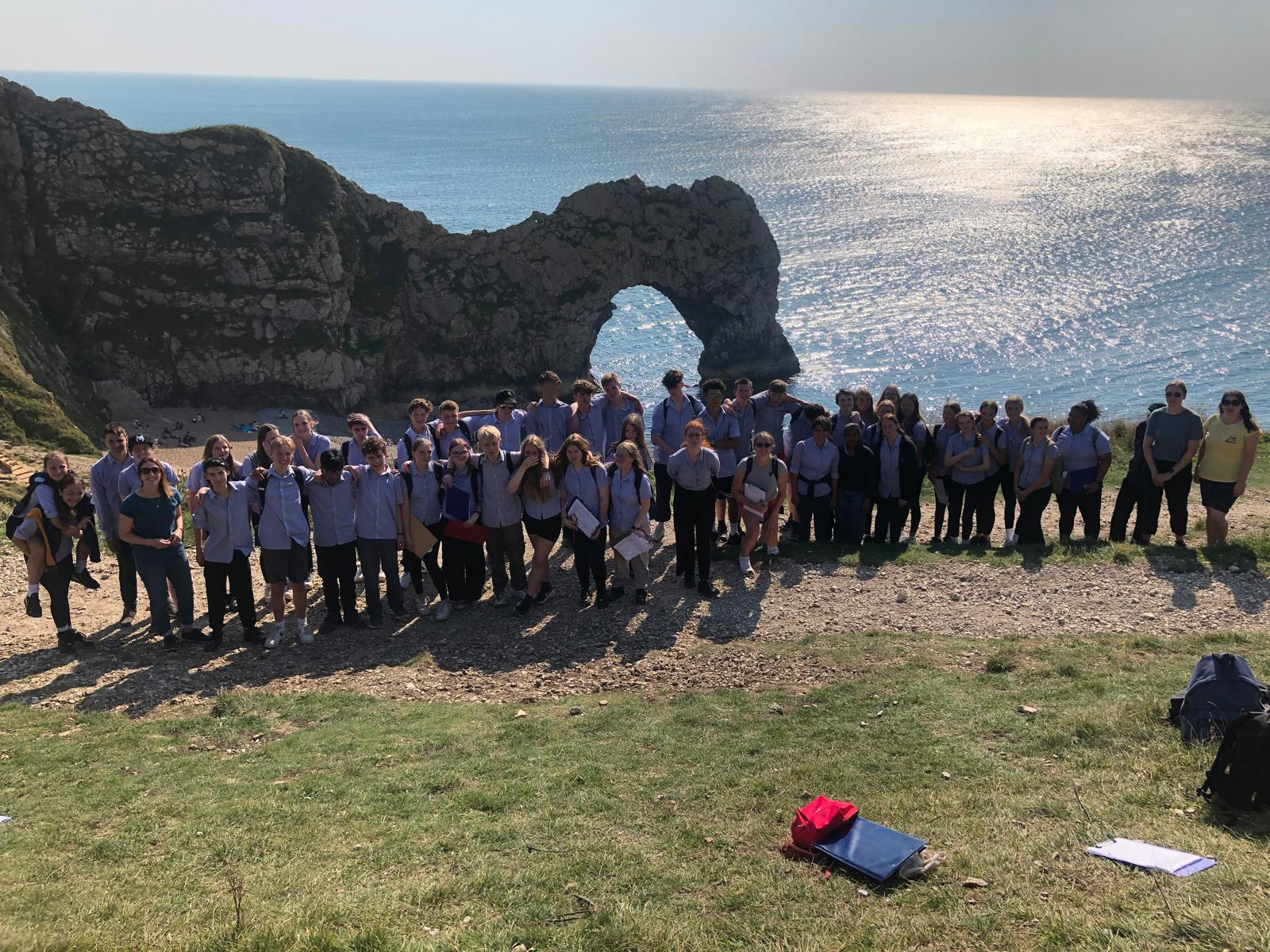
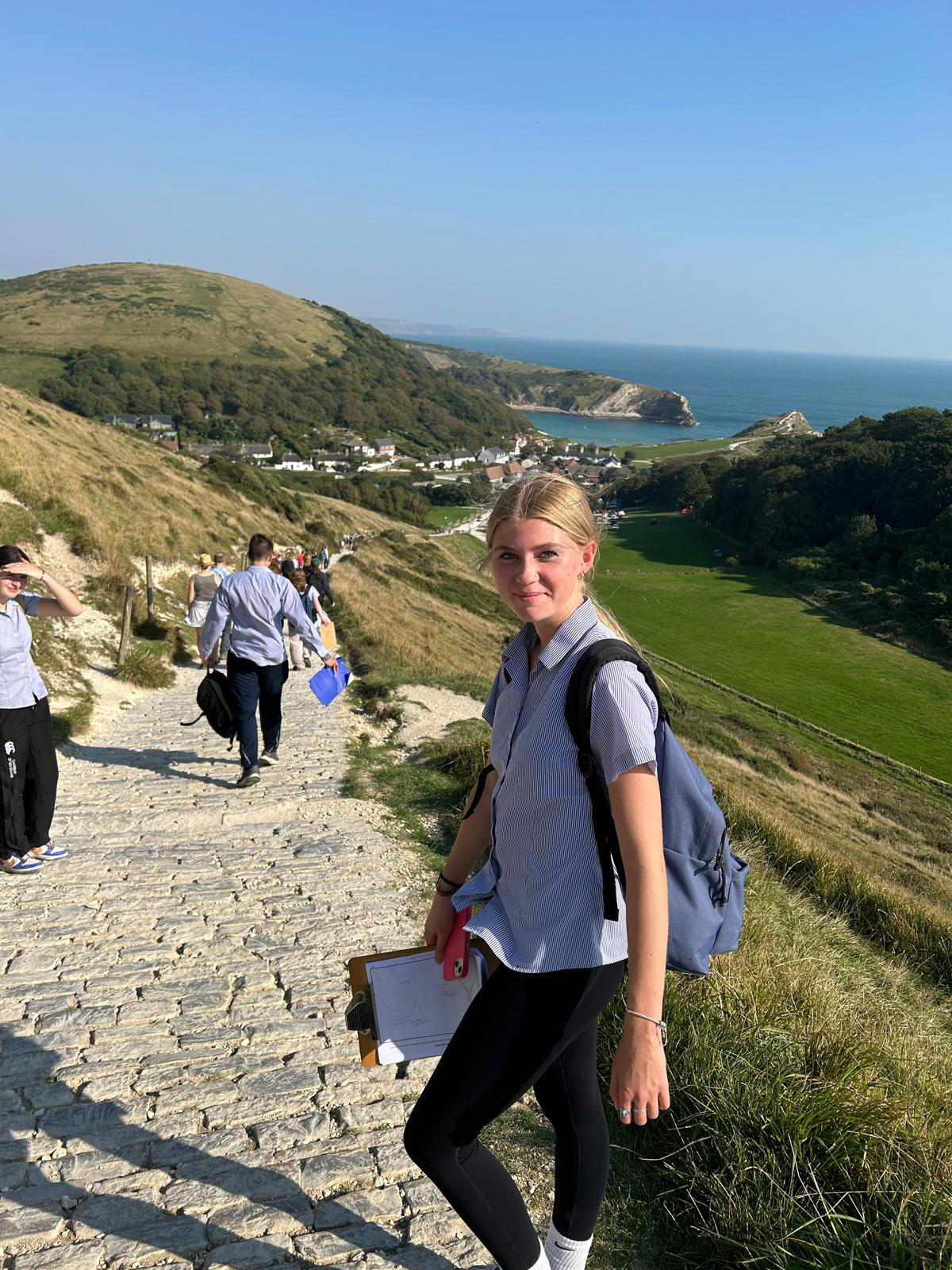
After completing all their surveys, many enjoyed a cold drink and an ice cream before we returned to school. On Friday we received many messages from colleagues and friends at school in Cirencester concerned that we had been outside in the heavy thunderstorms. We sent back lots of photos showing the bright sunshine we were enjoying at the same time!
Back in class, all pupils will now reflect on their fieldwork experiences to present and analyse their data. They will then be able to reach informed conclusions and evaluate their work.
'We liked the beautiful views, especially Durdle Door.' Poppy and Lilly (Year 11)
'Durdle Door was my favourite part.' Addyson (Year 11)
'We liked visiting Swanage and seeing what it’s like in a seaside town. We enjoyed collecting data along the beach and the ice cream!' Angus and Isabelle (Year 11)



